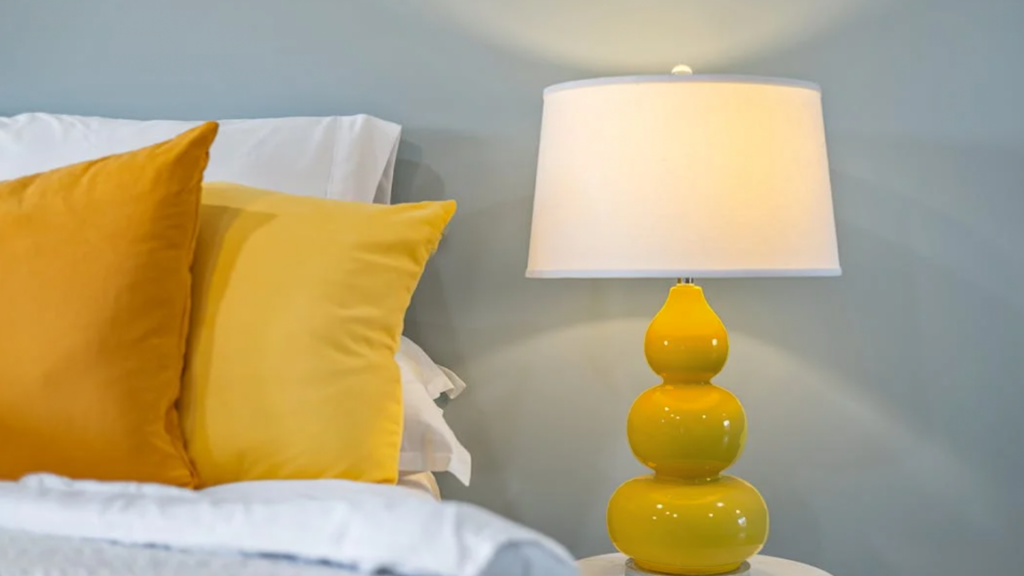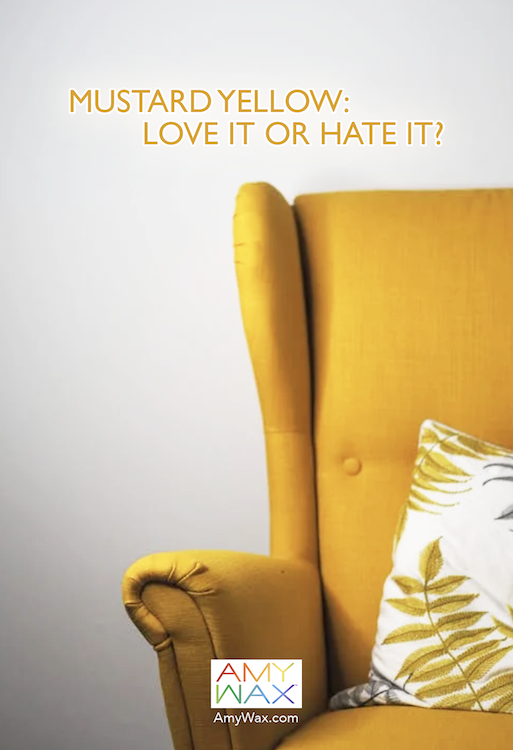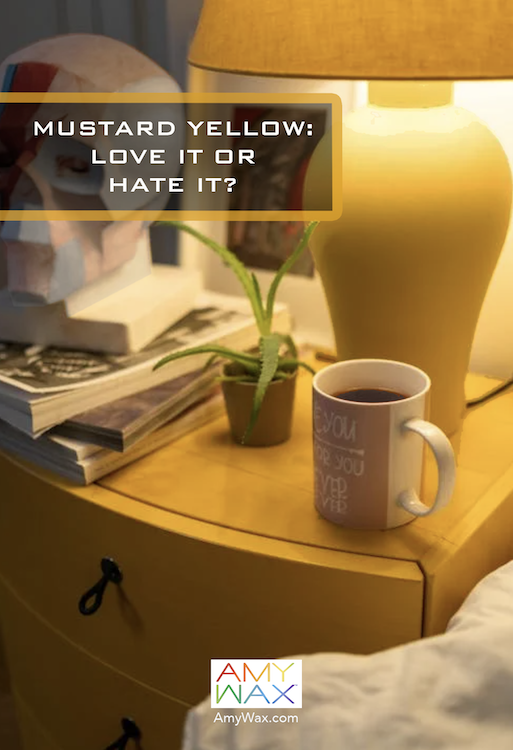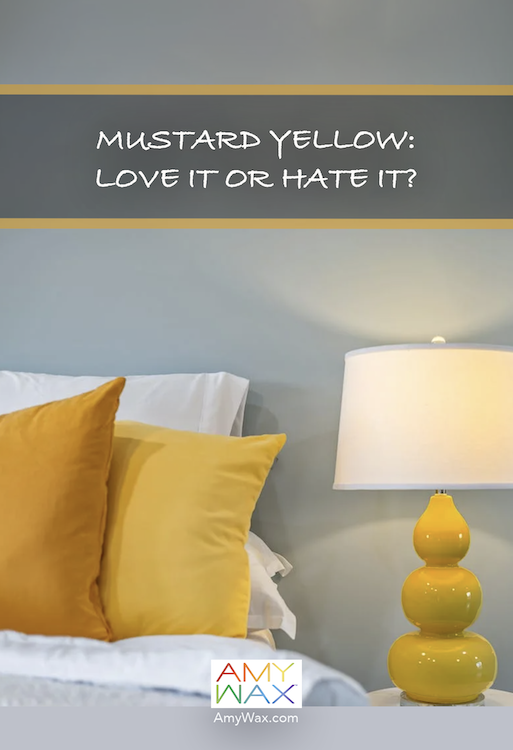
Some colors simply don’t have widespread enthusiasm behind them. While they may have some fanatical supporters, their general acceptance is somewhat divisive. One color that fits this description to a T is mustard yellow. As a color expert/color specialist, I’ve witnessed mustard yellow being a divisive color selection for designers of all types for decades. It’s simply a tough color to apply in ways that work best. But that doesn’t mean mustard yellow isn’t worth a try! No, quite the opposite. Mustard yellow can be a wonderful color to highlight in the appropriate space.
Let’s discuss the color, why people either love or hate it, and whether there’s a middle ground to be had!

Mustard yellow occupies a fascinating place in the color spectrum. It combines yellow’s sunny optimism with brown’s earthy groundedness, creating a cheerful and sophisticated shade. Yet this duality is what makes mustard yellow so divisive. It’s bold and attention-grabbing, which can inspire some and overwhelm others.
The cultural associations with mustard yellow add another layer to its complexity. From mid-century modern aesthetics to bohemian influences, mustard yellow evokes a retro nostalgia for many, while others may find these associations dated or niche. Mustard yellow is one of the most difficult colors to find balance with.

One common misconception is that mustard yellow is too intense to use in most spaces or is a difficult color to live with, no matter how you use it. While it’s true that an all-mustard room would certainly be overpowering for most, this isn’t a flaw of the color itself. Used judiciously, mustard yellow can bring vibrancy and warmth without overwhelming the senses. Often considered the quieter relative of gold and the earthier cousin of yellow, it can be a supreme accent color when used correctly.
Another misunderstanding is that mustard only works with neutrals. While it pairs beautifully with whites, grays, and beiges, it can also harmonize with unexpected companions. Try to envision deep navy, forest green, and even blush pink, creating eye-catching palettes alongside mustard yellow.

When used thoughtfully, mustard yellow can elevate a room’s design and emotional impact; this color thrives in spaces where warmth and comfort are priorities. For example, mustard yellow throw pillows or a cozy blanket in a living room can introduce a touch of brightness without dominating the space. Picture a mustard yellow tabletop lamp in a cool/neutral bedroom, adding just a pop of energy and life to the sleepy surroundings. Or, pair mustard accents with wooden furniture and textured fabrics for a grounded mid-century, contemporary, or farmhouse feel.
Mustard yellow’s retro charm is a natural fit for those who love vintage or eclectic styles. It pairs beautifully with patterned wallpapers, antique décor, and gallery walls. For modern minimalists, a single mustard yellow piece, such as an armchair or small coffee table, adds a bold focal point without disrupting the overall design. It won’t be for everyone, but for that enthusiast, it’s heaven.

As I always say and say again, every color evokes emotion, and mustard yellow is no exception. It exudes creativity, optimism, and a touch of nostalgia. It’s not as bright and happy as sunshine yellow nor as solemn as ochre, so I feel it’s great for spaces that aim to uplift and inspire while not being silly or overly bright.
Look, mustard isn’t a color for the faint of heart, and it turns many people off before it’s given a fair shake, but when approached with care and creativity, it can work wonders. This color consultant is not saying you must try mustard yellow because it will change your life, but I hope you consider it when the opportunity comes. Whether you want to add a vintage touch, create a refined-cozy ambiance, or inject a bold statement, mustard yellow has the potential to help you capture the emotion you want!
Mustard yellow has a wide range of uses, from complementing a more rustic setting to pairing with a retro aesthetic to appearing deliciously warm in a contemporary setting. Find how it will work in your home’s design and give it a try. I highly recommend it!
